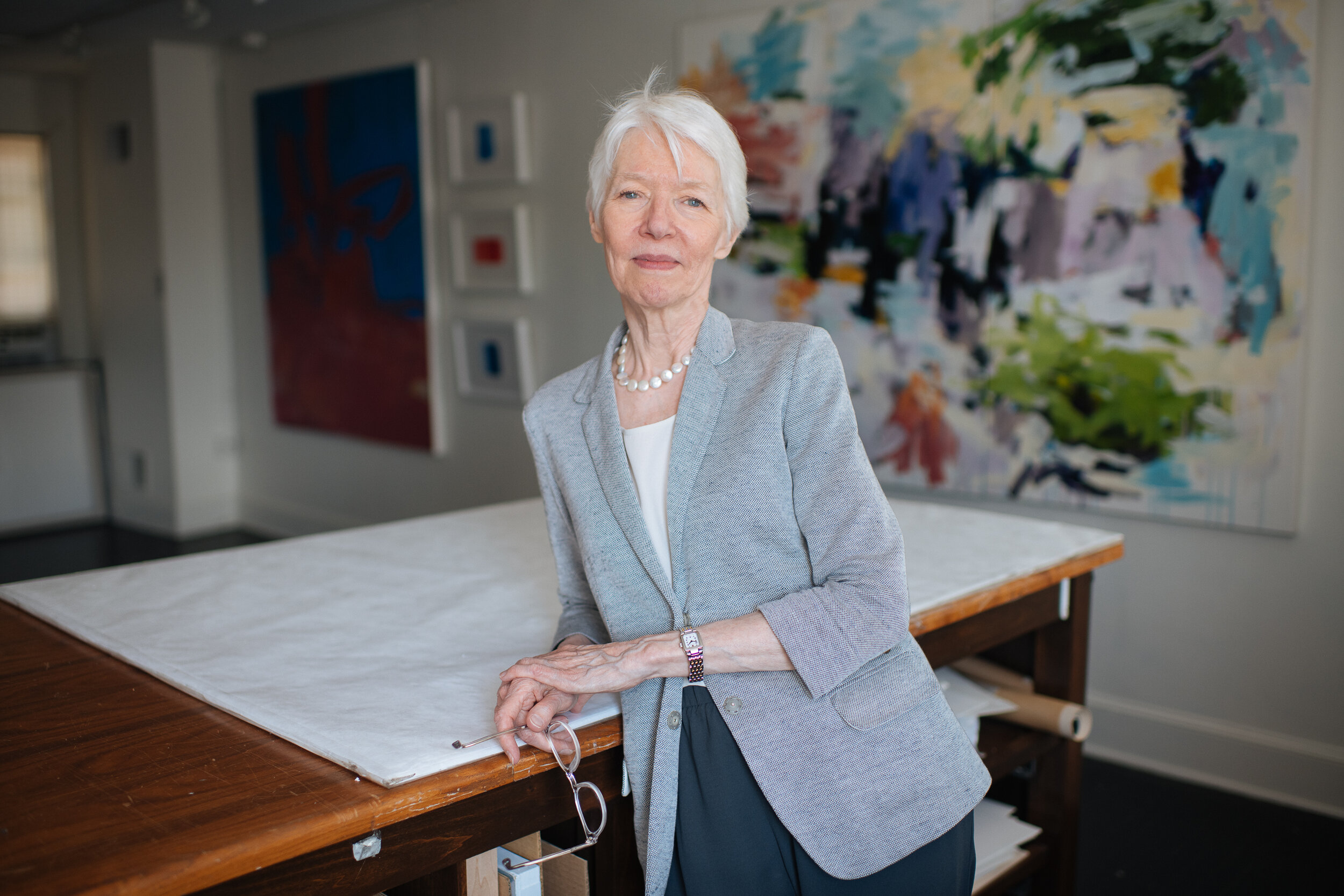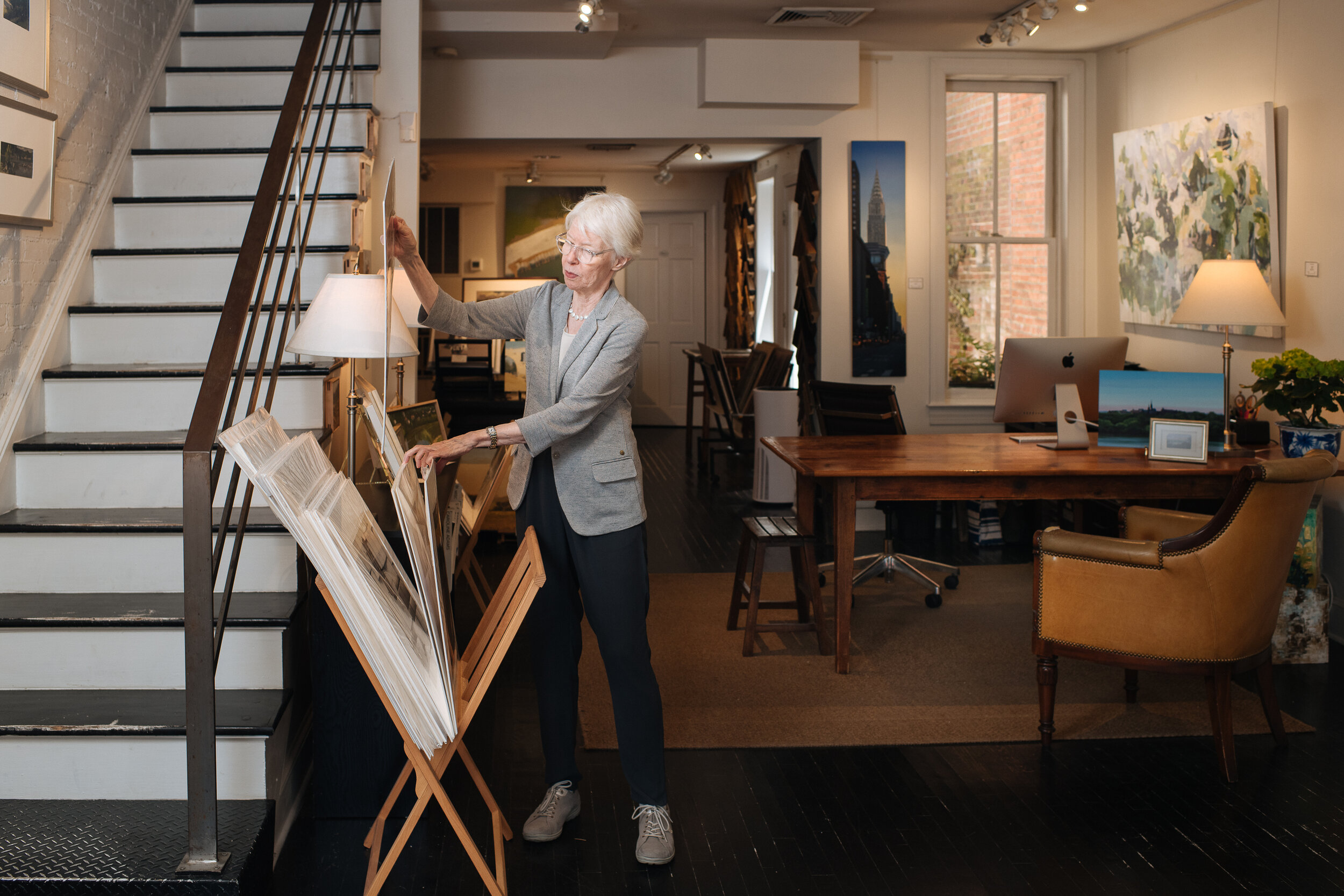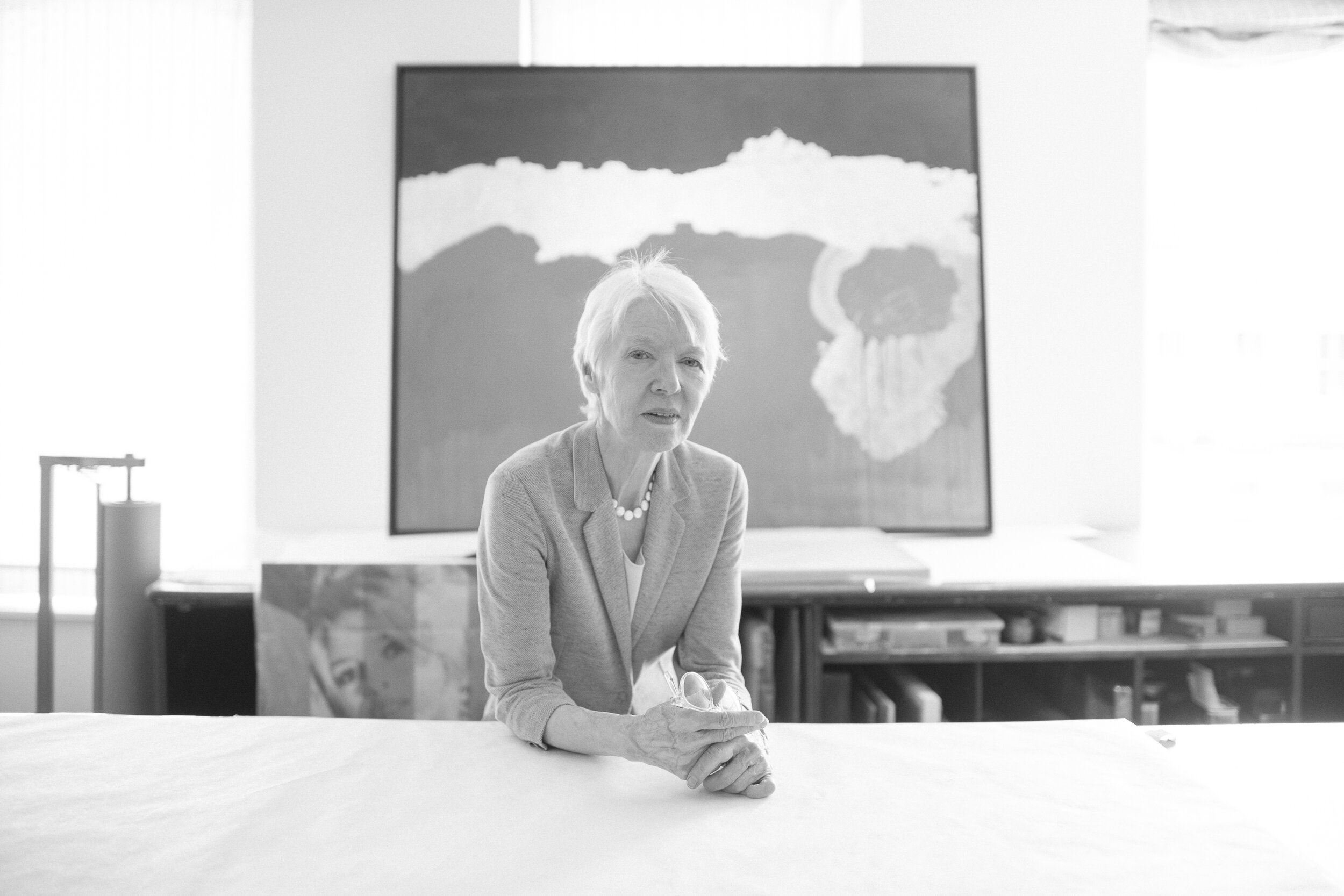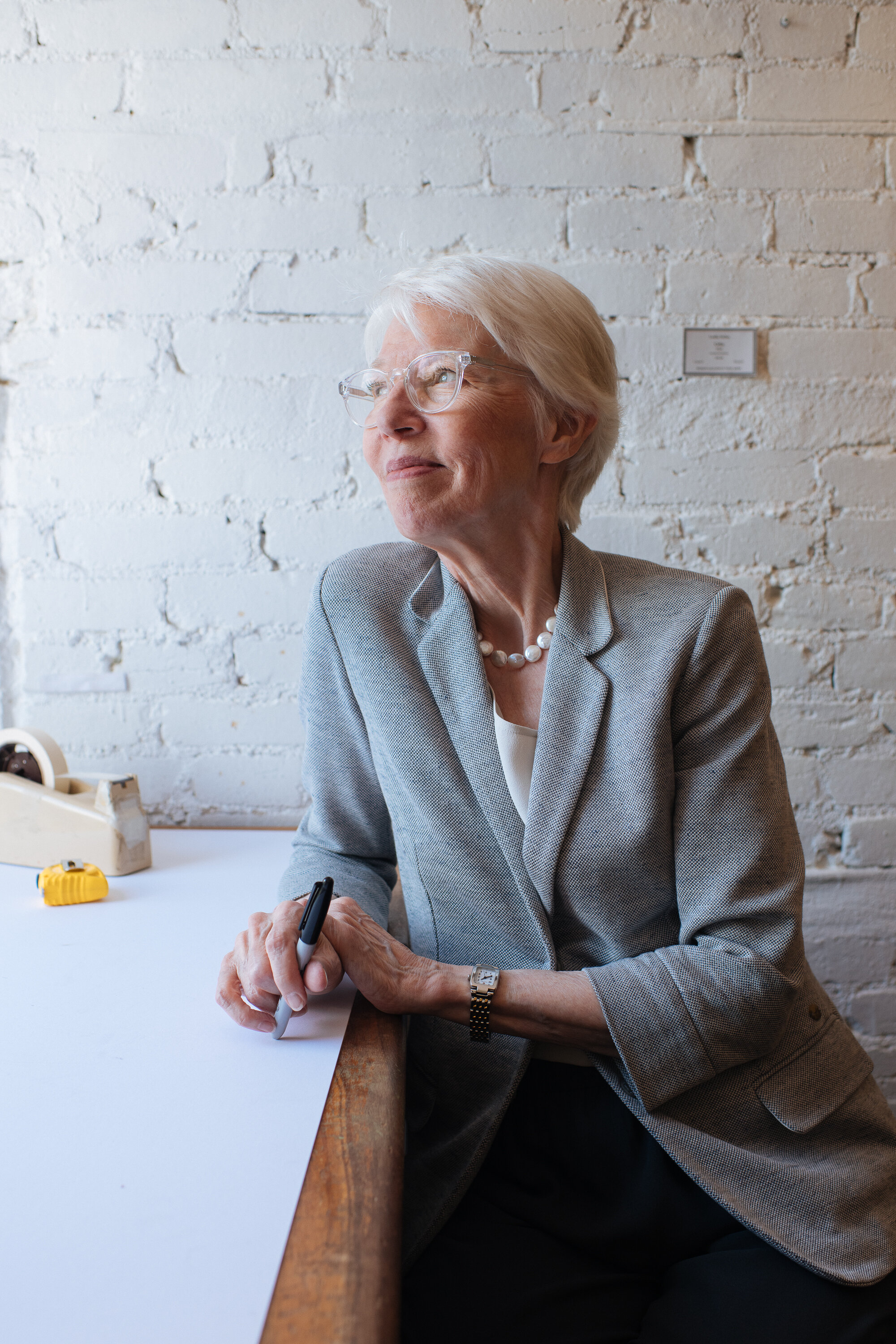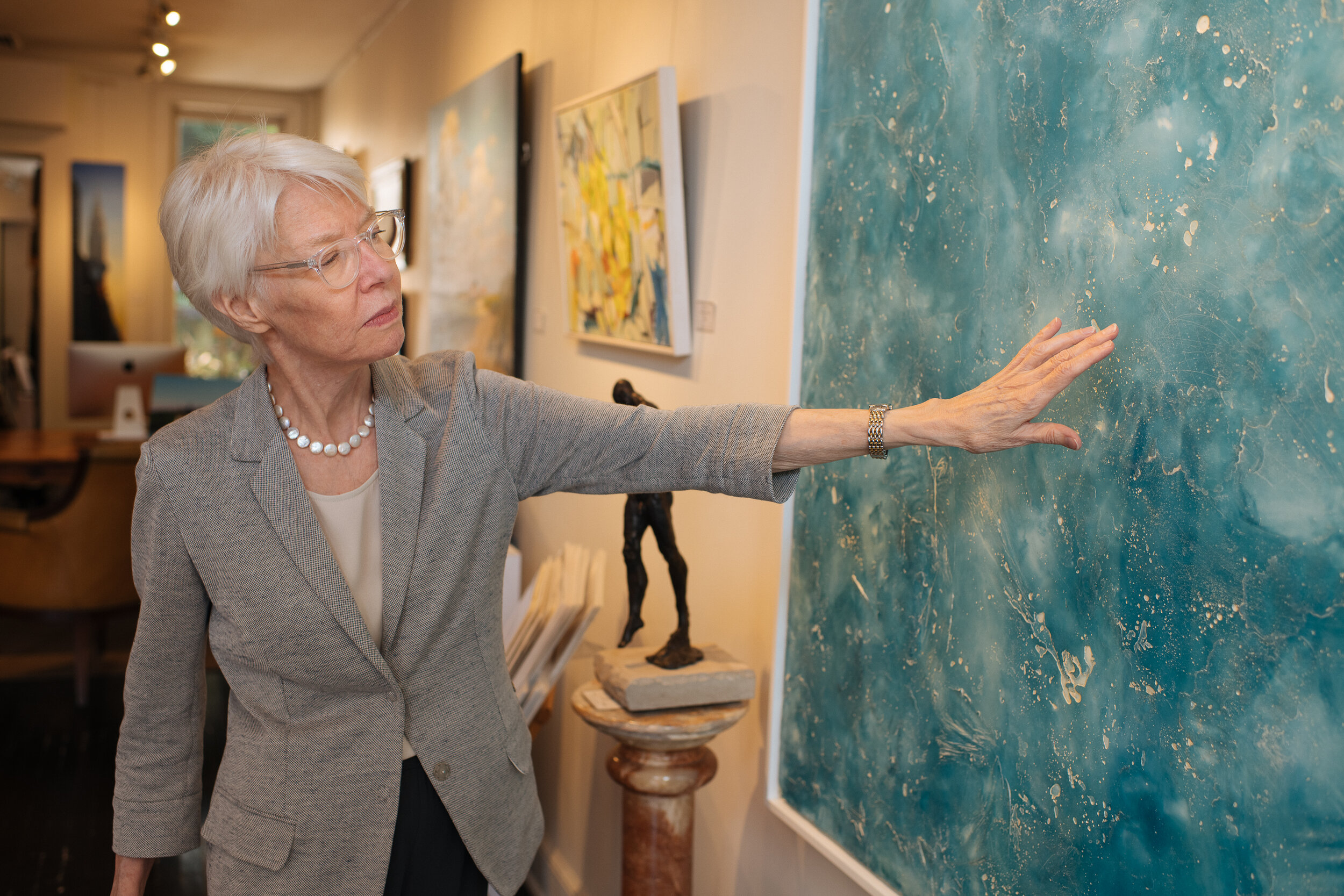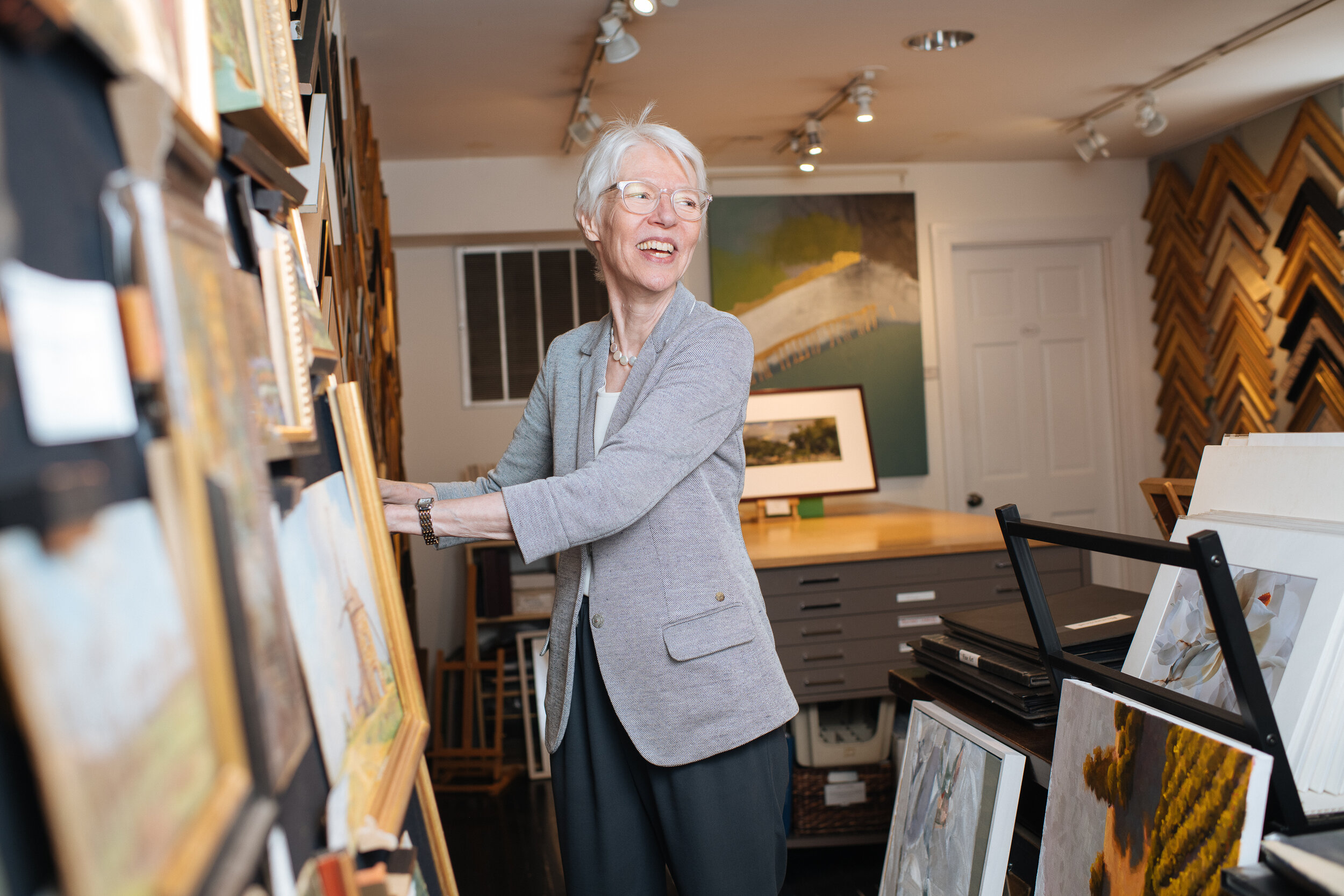‘I Started With a Couple Thousand Bucks and a Dozen Prints’
Susan Calloway
Owner, Calloway Fine Art & Consulting
1643 Wisconsin Ave NW
When Susan Calloway moved from Manhattan to Georgetown, she felt like she’d entered Heaven. Heaven, without romaine lettuce and The New York Times.
In 1980, Susan left a career in food publishing and moved to DC for her ex-husband’s government contract work. Georgetown felt a little ‘backward’ compared to New York, but her new life appeared to be picture-perfect.
‘I went from an apartment to a house and two cars, and a newborn baby. We even took the dog that came with the house. The yard, the whole thing. I changed my life completely when I moved here.’
After a brief stint in California, Susan’s family returned to DC and welcomed their second child, a daughter. Two-and-a-half years later, a freak accident suddenly sent Susan into a tailspin.
‘It was this crazy windy day and a stick-shift car that had been left in neutral rolled across the street and rolled over my daughter. She’s OK now, but she could have been killed. I had three miscarriages before I could have her so she was like the miracle child anyway, and I basically had a breakdown. I started looking for something in a very scattered way to make my brain think about anything besides seeing that car go over her.’
Art became her salvation.
Susan never thought much about it while growing up in Chicago, but developed an appreciation for paintings and prints after taking an art history course before her junior year abroad. She returned to France frequently throughout her twenties, visiting art galleries each time and unintentionally crafting her taste and eye.
‘I was really interested in antique prints in France, because I could carry them home. As I was looking for something to keep my mind busy back in DC, I met a woman who did framing for designers, and she introduced me to a wholesale print dealer. Prints were a big business at the time and I asked if she wanted to go into business. I started with a couple thousand bucks and a dozen prints.’
At the time, an antique dealer on Book Hill was pregnant and looking for someone to curate art. For the next seven years, Susan traded her time running the shop for space on her walls. In 2000, she opened Susan Calloway Fine Arts in her current location.
‘I think many people open businesses in Georgetown and figure they have a wonderful product, and people will just come and buy it. This is so not true. But I had no real overhead, and I have a very balanced brain and some business sense. I was mostly self-taught, and my taste was admired.’
What Susan lacked in experience, she made up for in demand—taking design courses at the Corcoran, and framing courses at the Smithsonian and NYU Conservation Institute taught by the head framer from the National Gallery, and offering those services to her clients.
‘Most framing businesses approach the work from a technical point of view. There are a lot of framers who have a little gallery, but rarely the reverse. It turns out I had a talent for it, and something unique to offer. It’s also given me insight into evolving tastes, because I could see the art people were bringing in. The business grew really organically that way.’
Nearly 20 years after opening in her current location, Susan’s gallery has continued to grow and shift with the times. Antique prints have largely been replaced with contemporary art, and the Internet has drastically changed the way people shop for art.
‘When I started, I would almost be in a panic every Saturday because there were so many people in here at one time. Steffi Graf and Andre Agassi were here; I’m a big tennis fan, and I didn’t even know it was them because it was so crowded. The same thing with Barbara Streisand. Now it’s so hard to get people in. Online shopping has changed all of retail, and we’ve been hurt by it.’
Galleries nationwide are in real danger of closing. Many are moving to appointment-only, or opening strictly for shows. Susan is doing what she can to adapt, from more engaging artist talks, to an increasingly robust website, and a recent rebrand to reflect new consulting services. Still, there’s no silver bullet. Under the best of circumstances, art is an incredibly difficult business.
‘Art is not an easy thing to sell. You don’t need it. You can’t wear it. Clients might know everything about fancy cars and watches, and Prada this and Ferragamo that, but they’re not sure exactly why art costs what it does. The joy is in the collecting, not just the hanging of it.’
Susan says so many people are insecure about buying art—all the more reason to turn to a trusted gallerist instead of blindly shopping online.
‘I think it’s a little crazy to buy art online if you don’t know the dealer or the artist. It’s good to see it in person and talk to someone who can tell you about it, who’s been in the business for years. I think people want art, but they’re not sure, and they want that trusted reassurance. There’s a lot of value to my longevity.’
DC’s art scene has expanded over the last two decades, yet Susan says it’s harder than ever to reach that target audience. Original clients are aging out; 20-somethings, too early in their careers to afford fine art. Susan’s best clients—the majority of whom live in Northern Virginia, Bethesda, or Chevy Chase—tend to be around 40, settling into their first homes with young children.
Too often than not, they save art for the end of their move, once their budget’s been nearly depleted.
‘You can put $10,000 curtains on the windows, and put all the furniture in a house, but if there’s no art on the walls, it doesn’t look like it’s finished. Or you’ll get a rug with weird colors, or a print fabric for the sofa, and there’s not a damn piece of art that you can put over that. So many clients fall in love with art that absolutely will not work. Start with the art!’
As tastes change within the art world, Susan trusts her own sensibilities. She occasionally discovers new artists at art fairs, though more often, she’s the one being pursued. For every gallery, she estimates there are 10,000 artists. It’s an unbelievable pool, but Susan refuses to sell anything she doesn’t personally believe in.
‘We have such a broad range of art, but I appreciate all of those things. I still like antique prints. It’s whether or not I resonate with the work, and if it’s well made. Like anything that’s handmade, you can tell the quality of a painting when you pick it up. I want things that are finely produced, where the artist took the care.’
No matter the quality of the art, Susan recognizes her business is in for an uphill battle—fighting against a retail landscape no one could have predicted when she first opened. Still, she sees a place for her gallery, and others.
‘Everyone says they want the experiential now. It’s an experience to look at art.’
